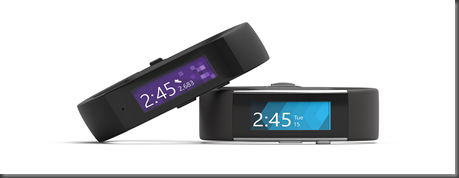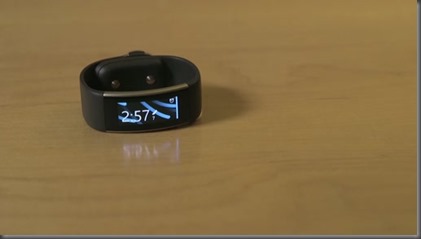First there was Zune, which is pretty much gone except for the desktop client which is still available for the diehard amongst us. Then came Xbox music. A service that failed to live up to either Zune or the Xbox name. Now there’s Groove. How long this incarnation of Microsofts music service will stick around is anyone’s guess. But at the rate it’s going with its available features, it can’t be long. Groove is feature poor. Compared to Apple music/iTunes, Spotify & even Google play music, Grove is just sad as a music service. And it’s even sadder when you know Microsoft can and has done better. But it doesn’t mean that what’s wrong with Groove can’t be fixed.

Let’s get Social again:
What passes for social in groove is a joke. I can share a song or a playlist to Facebook, Twitter or whatever the share pane will allow. Big fucking whup. We live in a day & age of Spotify and can see each other’s music, playlist and latest plays without having to open facebook. Congratulations Microsoft, you brought groove into 2010. But if you were a Zune user, you know that Microsofts music service had social before Spotify existed. Lets’ bring this back. Imagine logging into Groove with not only your Microsoft account, but also your facebook and twitter account. In doing this, Groove can not only link you to your friends & the music they’ve shared/liked. It can see what music, artist, concerts you’ve shared/liked and curate music based experiences for you. Be it songs or playlist or concerts.
For Groove to survive and maybe even succeed, it must be more than just a means of playing music. It must be a music social network. From within Groove, you can see your friends regardless of whether they have a groove account. You can see the music they’ve shared, liked and artist they’ve followed. If they have a groove account, you can see their most recent plays & the playlist they’ve made. You can communicate with them from within Groove and even send them music & playlist. These songs & playlists can much like a message in snapchat be set to automatically self-destruct.
Let’s add a feature to kill a hardware accessory, Shared play. Have you ever seen two people walking down the street and they are either sharing a set of earphones or they have a headphone splitter? The worst of these is the Bluetooth headphones that can share the music experience at the same time with someone with the exact same pair of ugly & otherwise useless headphones. Why can’t we listen to music from our own devices but have them play at the same time? Netflix for the Xbox 360 used to do this.
Now this shared experience can be expanded beyond people on your friends list. Let’s say that you’re at a friend’s place. You have on your phone and they have groove on their PC or Xbox. But you aren’t friends on groove for some reason. But your device is on the same Wi-Fi as their devices. You can broadcast through their device and add to their now playing playlist. With Spotify, stagnant on windows mobile and not even available on the windows store. Social features are DESPERATELY needed. There, now we’re not only back up to the social levels we were at when Groove was Zune, we’ve up the game a bit by adding Chromecast like functionality.
But music is about more than the music your friends listen to. It’s about the artist you love. By plugging in your social media information, Grove automatically follows artist you’ve followed. From the artist section, you can get more than their albums, songs and a little information about them. You can get their full Wikipedia page & if applicable, their IMDB information. You can also get their latest facebook, twitter and even Instagram feed via a mixed view pane. This is in addition to their photos and if applicable, a link to their website. Zune also had a great, but under developed feature that allowed you to see artist concert dates. If Microsoft partners with a ticket agency like live nation & or ticket master, you can get concert promotions directly through Groove.
Now we need to fix groove itself. So far, grove is SOOOO basic that there’s nothing that needs to be stripped from it. But there’s a few features that it’s in DESPERATE need of. One of those feature is crossfading. It’s the ONLY thing I like about iTunes. This should be available if throughout the app whether your just playing random music or listening to a playlist. Another is a feature that was available in the Zune HD & windows phone. The ability to affect the lock screen when music is playing. Not simply affect the live tile. Let’s add a few social features that don’t merely involve sharing a link to facebook and twitter (Sidebar, If you’re going to let me share what song I’m listening to via social media, INCLUDE THE ALBUM COVER for the song along with some text saying I’m listening to X song from X artist from X album. Just FYI). For instance, lets borrow from tinder. Let’s say I’m listening to a smart playlist. But the biggest feature that’s missing from Groove is podcasts.

More than music:
You can get music from any app. But having 1 place for all your music & podcasts is something that’s appreciated by virtually EVERYONE. Google knows this. It’s long past time that Microsoft accepts this. On windows, I should have no problem what so ever in finding new podcasts via the windows store. It gives people a reason to go there and maybe get games, apps, media and books.
The podcast app from windows phone, albeit bare bones has a great mechanism for searching for podcasts. So that if for some reason, a podcast isn’t available in the store, it can be found thanks to Bing. Podcasts should be displayed and categorized in accordance with the way the store works for apps, games & media. But from within the app, there are core features that Groove MUST have. The ability to add podcasts via OPML file is at the top of that list. Because many of us have podcasts libraries with other services and this shouldn’t be a barrier to entry. Adding podcast via a link is also important because some of us subscribe to podcast via paid subscription. And on this note, it’s important that it can be able to add login information if the podcasts ask for it. Like music MUST have crossfade, podcast must have the ability to be played at faster speeds, skip and rewind by a set amount of time.
Now that the basics are there, what’s needed now for podcast is smart playlists. These are groups that are automatically created based on the genre that corresponds with that podcast. Other than these, there are 4 other list: All podcasts, new episodes, now playing and downloaded. These are fixed playlists. User can create playlist. Podcasts and playlist can have setting fairly like music playlist. They can be set to be available offline. A set number of episodes can be downloaded and this can be set for when in Wi-Fi. Podcasts can be set to be automatically added to now playing playlist once a new episode is added. Old episodes can be automatically deleted once listened to or once a new episode is downloaded. Episodes can also be favorited for listening to later.
But Groove is now social. You can see what your friends listen to. You can share podcasts with them. Either your choice of episode of entire podcast. This should be limited to podcast available in the store. For podcast, you’ve added via link and even need login credentials for, you can only listen to their podcast if you are on your friend’s groove page. You can’t subscribe or download. Possibly even limit the amount of time you can listen to that podcast. But ultimately, podcast can be as social as music. And if used with OneDrive for syncing, I should be able to stop listening to a podcast on my phone and pick it right back up on another device.

Groove is can be so much better. We know this because Microsoft has done better with its media players in the past. Now Microsoft needs to take a few simple actions to make Groove a better media player. Doing the above and bringing groove to even more platforms beyond Windows, iOS and Android will help make groove sustainable and maybe even popular. Bringing it to Mac, Linux & even if possible other gaming consoles will help bolster Groove.
If you have some of your own idea, leave them in the comments section below. If you agree with me in anyway, do me a favor. If you’re a windows insider, go to the feedback hub and add as a new suggestion “groove needs better social and podcast support” and post a link to this article. And or Tweet this article at:
https://twitter.com/joebelfiore
https://twitter.com/panos_panay
https://twitter.com/donasarkar
AND last but not least








